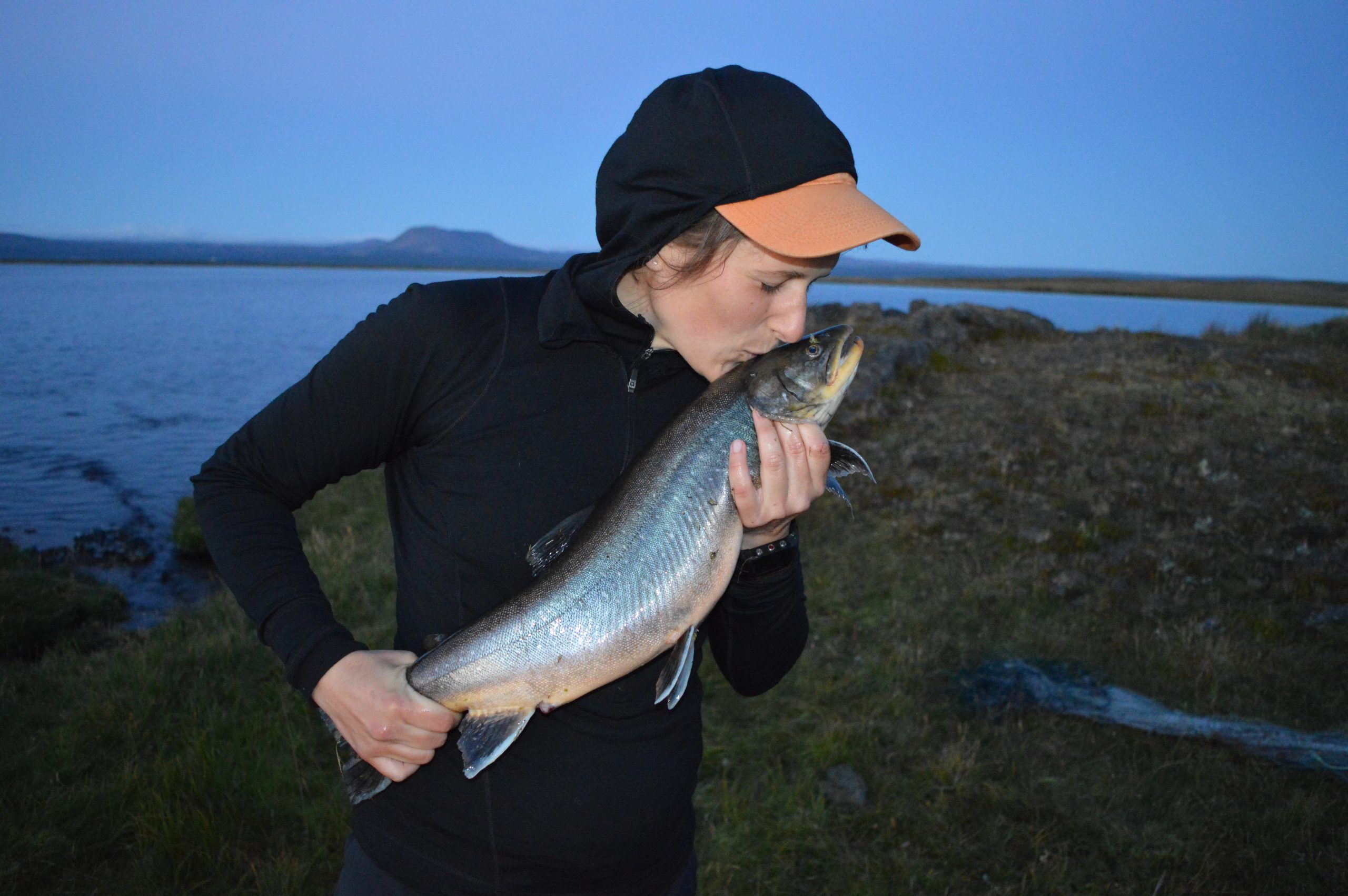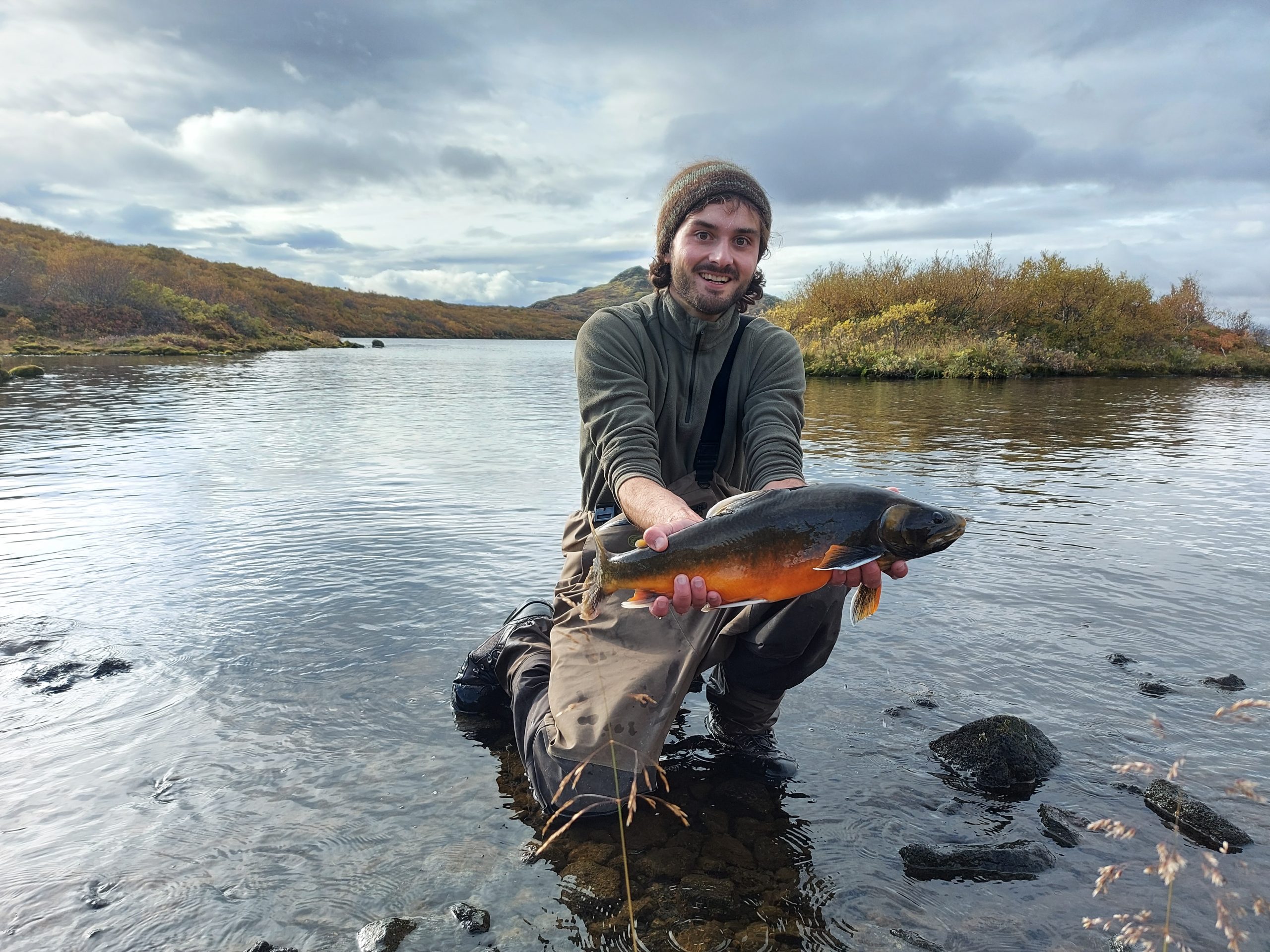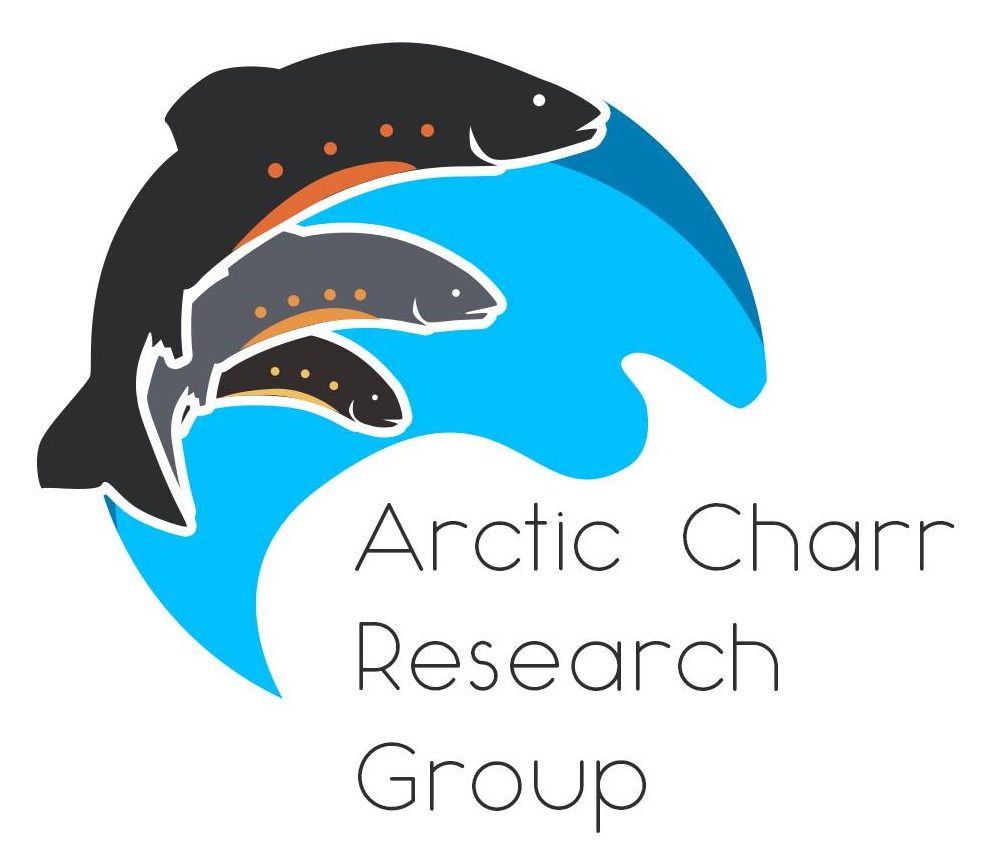PIs

Kalina Kapralova
My main research focus is on adaptive divergence, parallel evolution and speciation and for the last 15 years I have been working with the very special Arctic charr system in Iceland. I am currently leading two large research projects dealing with the genomic basis of adaptive differentiation of the Thingvallavatn Arctic charr morphs and the evolution of reproductive barriers in sympatric Arctic charr morphs.
Lately, I have also been involved in developing techniques for gathering ecological data which can be used to model the effects anthropogenic activities and climate change will have on salmonid species. The last few years I have been working closely with the Thingvellir National Park, informing them what our latest finding are, supplying photo and video material for their visitor centres. Since 2018 I have been working with Professor Benjamin Hennig from the University of Iceland on developing an efficient, low cost pipeline using commercially available drones and remote sensing techniques to monitor salmonid spawning grounds.

Arnar Pálsson
My research tends to focus on evolutionary genetics, specifically the the genetic and developmental correlates of adaptive changes and neutral modifications of populations and species undergoing evolutionary changes. For the last 13 years I have been working with Arctic charr and also recently the related Brown trout. With our colleagues at University of Iceland we have addressed questions of adaptive divergence in the sympatric morphs in Lake Thingvallavatn, using population genomics and developmental transcriptomics.
Out of the large set of interconnected projects that the group works on, we have been contributing mainly to studies of the population genetics of anadromous charr in Iceland, stream charr and their connectivity with landlocked populations and relationship of plasticity and divergence. The last project involves experimental work to study the levels of developmental plasticity in Arctic charr and how this relates to trophic specializations. We are comparing developmental responses between two sympatric charr pairs, and use anadromous population as a reference group to represent the ancestral plasticity and traits. The experimental treatment was administration of pelagic vs. benthic diet, which mimics the dietary specializations of sympatric charr and diverging salmonids in many systems. We are conducting analyses of external morphology, internal feeding structures and gene expression in fish reared in this experiment. This work is done in collaborations with researchers in Canada and Iceland.
Zophonías O. Jónsson
Sigríður Rut Franzdóttir
Sigurður Sveinn Snorrason
Postdocs

Sarah Steele
My research interests surround morphological and ecological divergence of species and ecomorphs over evolutionary timescales and how this divergence can come about or be reflected in differences in ontogenetic processes among individuals. After the opportunity to join fieldwork during a vacation to Iceland in 2016, I fell in love with the Icelandic Arctic charr study system.
Currently I am postdoctoral researcher working with Professor Arnar Pálsson investigating the relationship of plasticity and divergence. In addition to conducting analyses of external morphology, its divergence among morphs and plastic response through development in response to pelagic vs. benthic diets, I am also investigating windows of plasticity in Arctic charr, as well as plasticity of behavioural traits, internal morphology, and functional ecomorphology with collaborators in Iceland.
PhD students
Marina de la Cámara
Interested in evolutionary processes such as ecological diversification and speciation, I started my PhD as part of the Arctic charr group in January 2020. For this project, I will focus on the genomic basis of adaptive differentiation between the four closely related morphs of Arctic charr in lake Þingvallavatn.
Throughout my doctoral studies I will use QTL mapping in combination with population genomics methods to try to disentangle the genomic architecture of traits associated with the divergent phenotypes of Arctic charr.

Quentin Horta-Lacueva
Unravelling how reproductive isolation evolves among populations facing contrasting ecological conditions is the common theme of my research. Focusing on the emblematic Arctic charr of Thingvallavatn, I investigate through the lenses of genomics, developmental biology and behavioural ecology how different morphs are diverging despites the absence of geographical barriers to gene flow.
These diverging processes may involve the evolution of differences in breeding habits and in mate choice, and/or imply selection against hybrids. I study these aspects by conducting ecological surveys and experimental studies on development, morphology and behaviour, and gene expression. Based on the data from these projects and by using genetic simulations, I aim to estimate which reproductive barriers are the most important in explaining the current state of divergence of the Arctic charr morphs, and how such barriers build-up through evolutionary history.
Marcos Lagunas
Han Xiao
Sébastien Matlosz
Master students
Lieke Ponsioen
